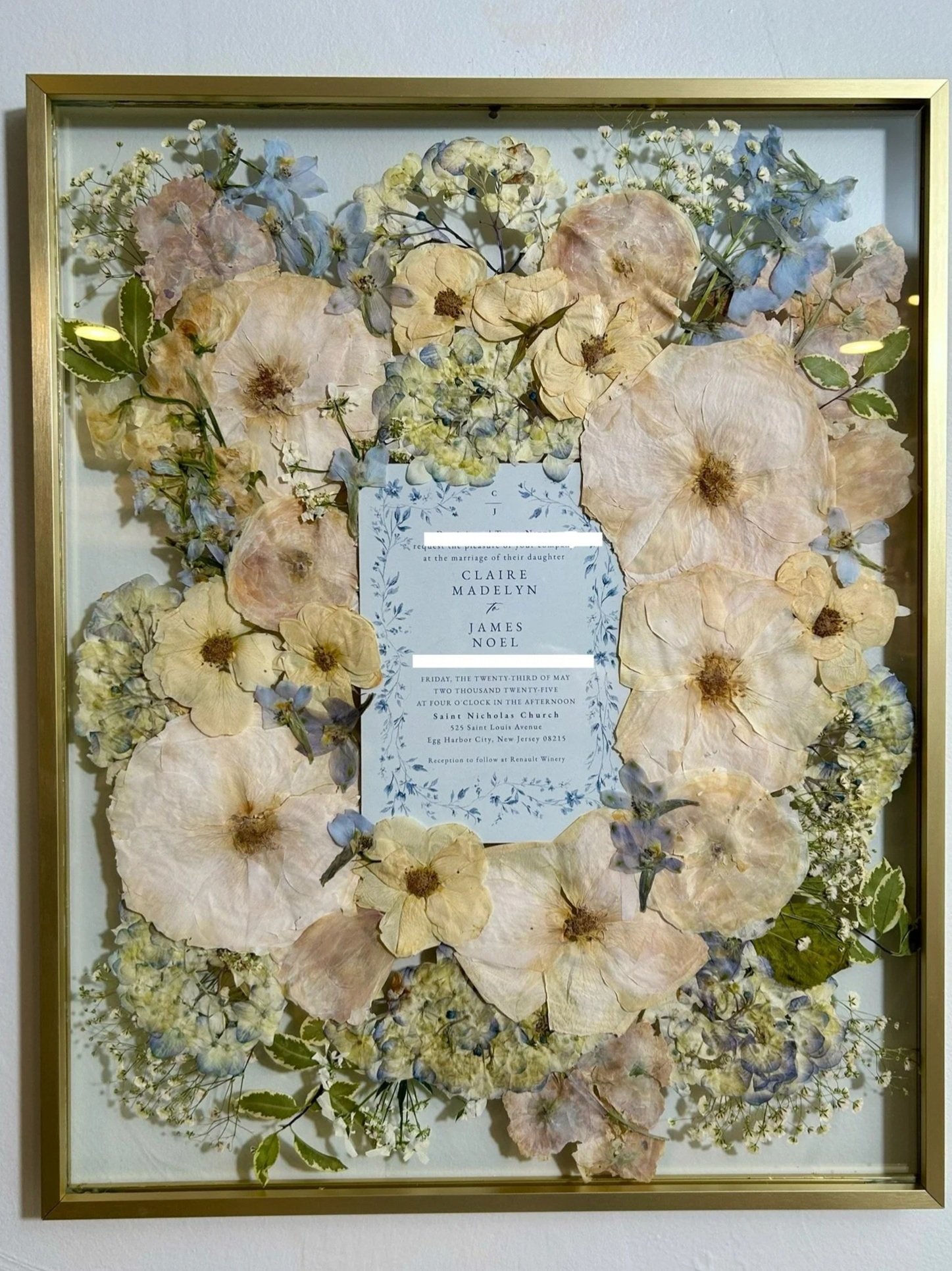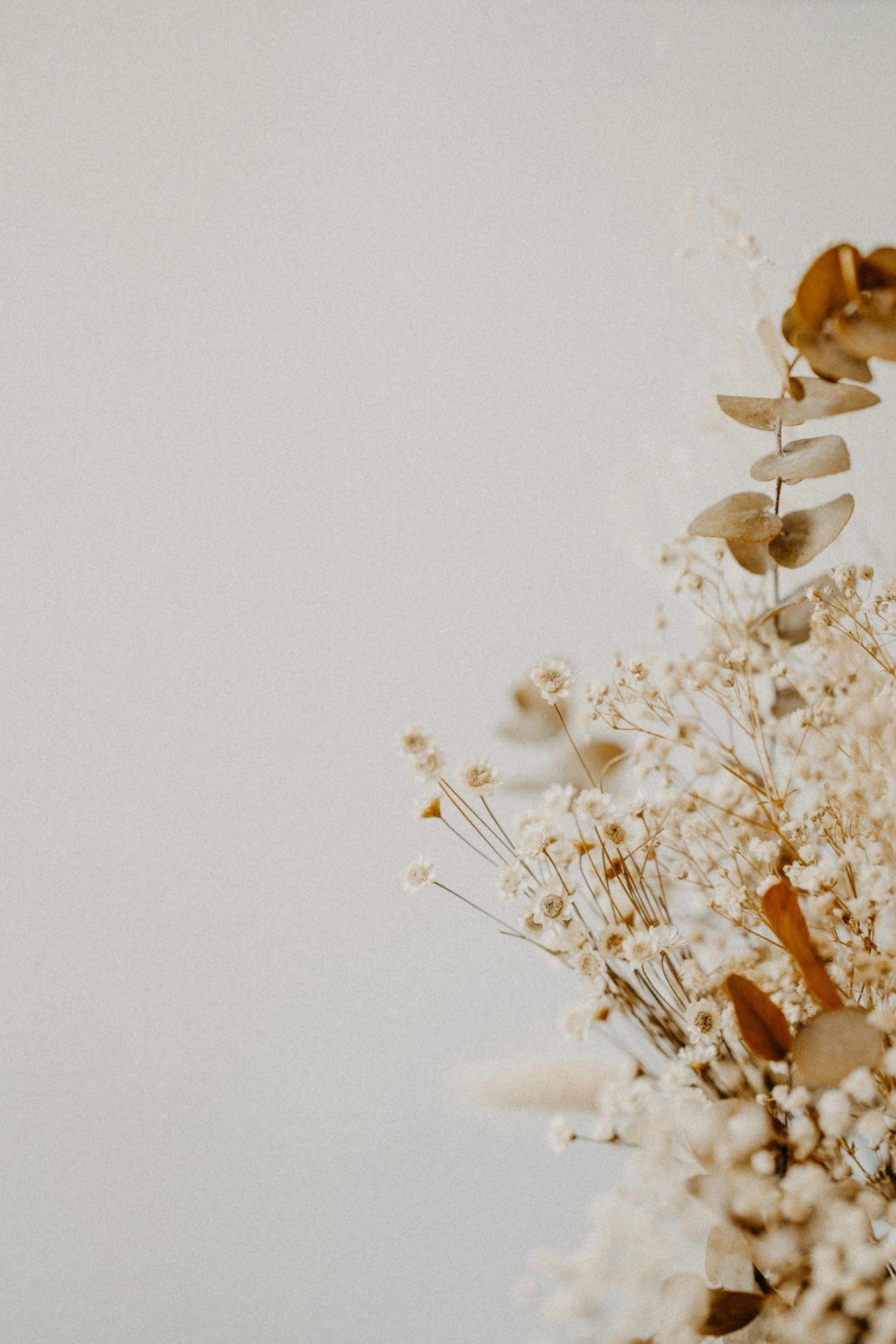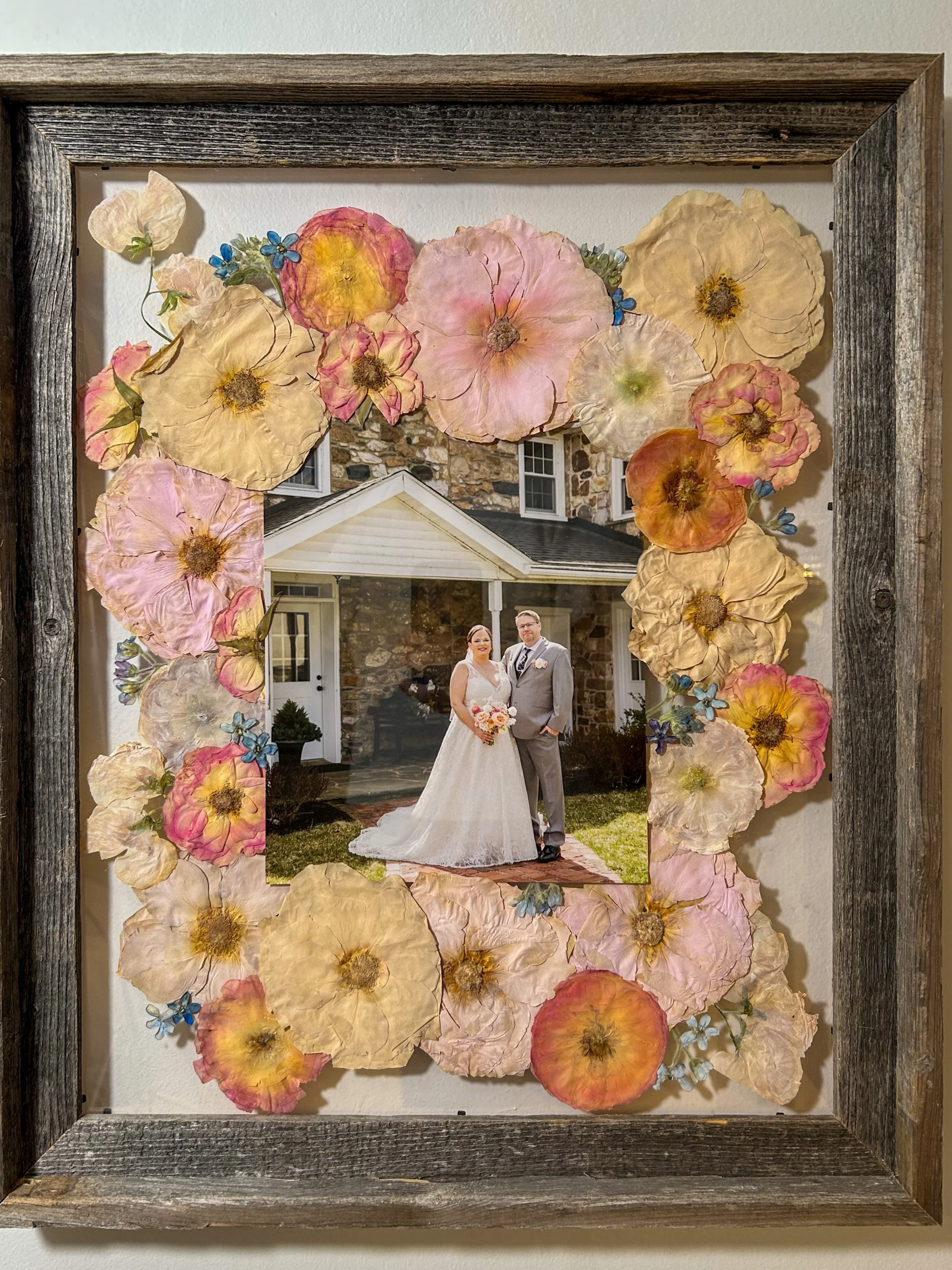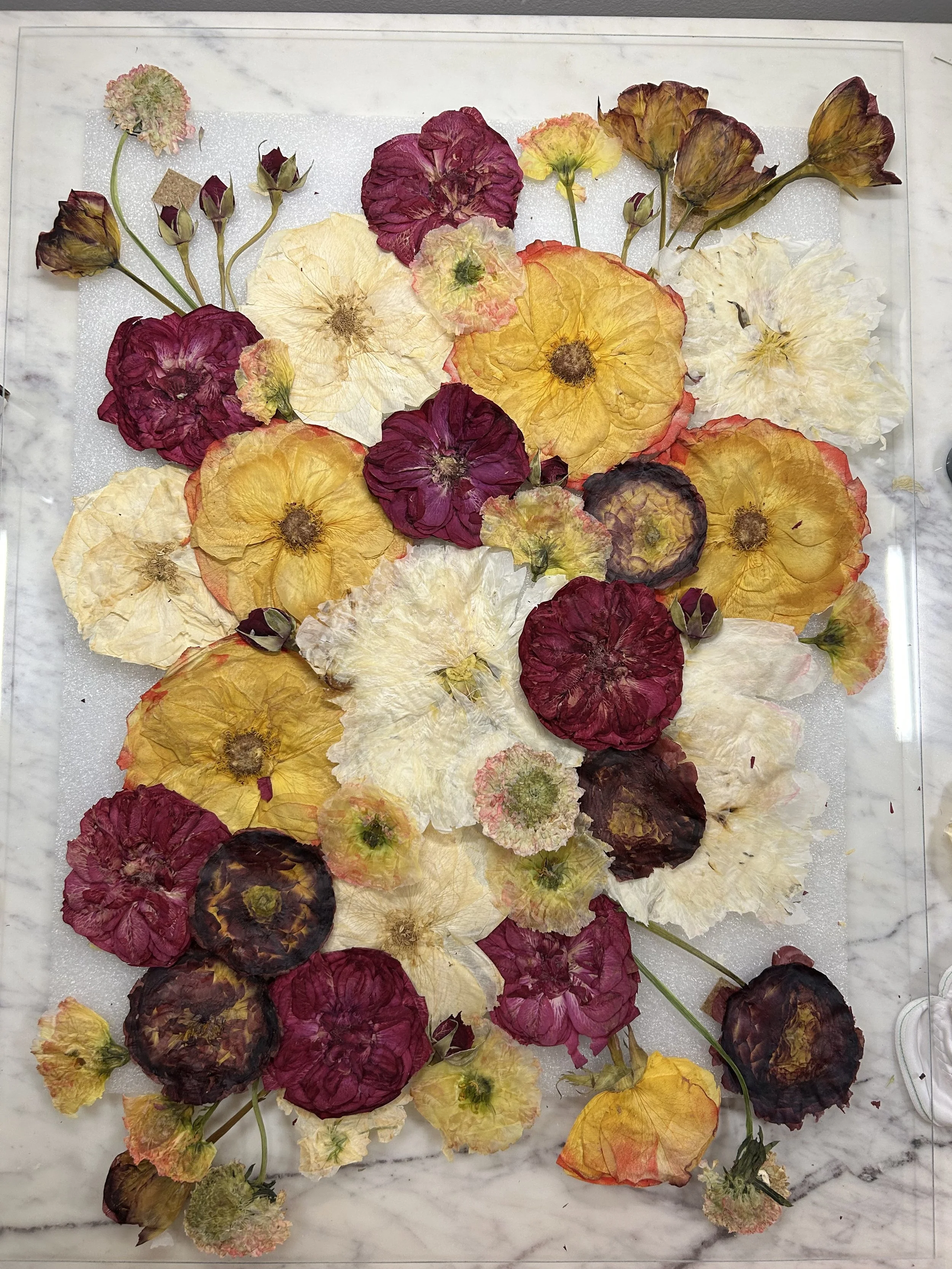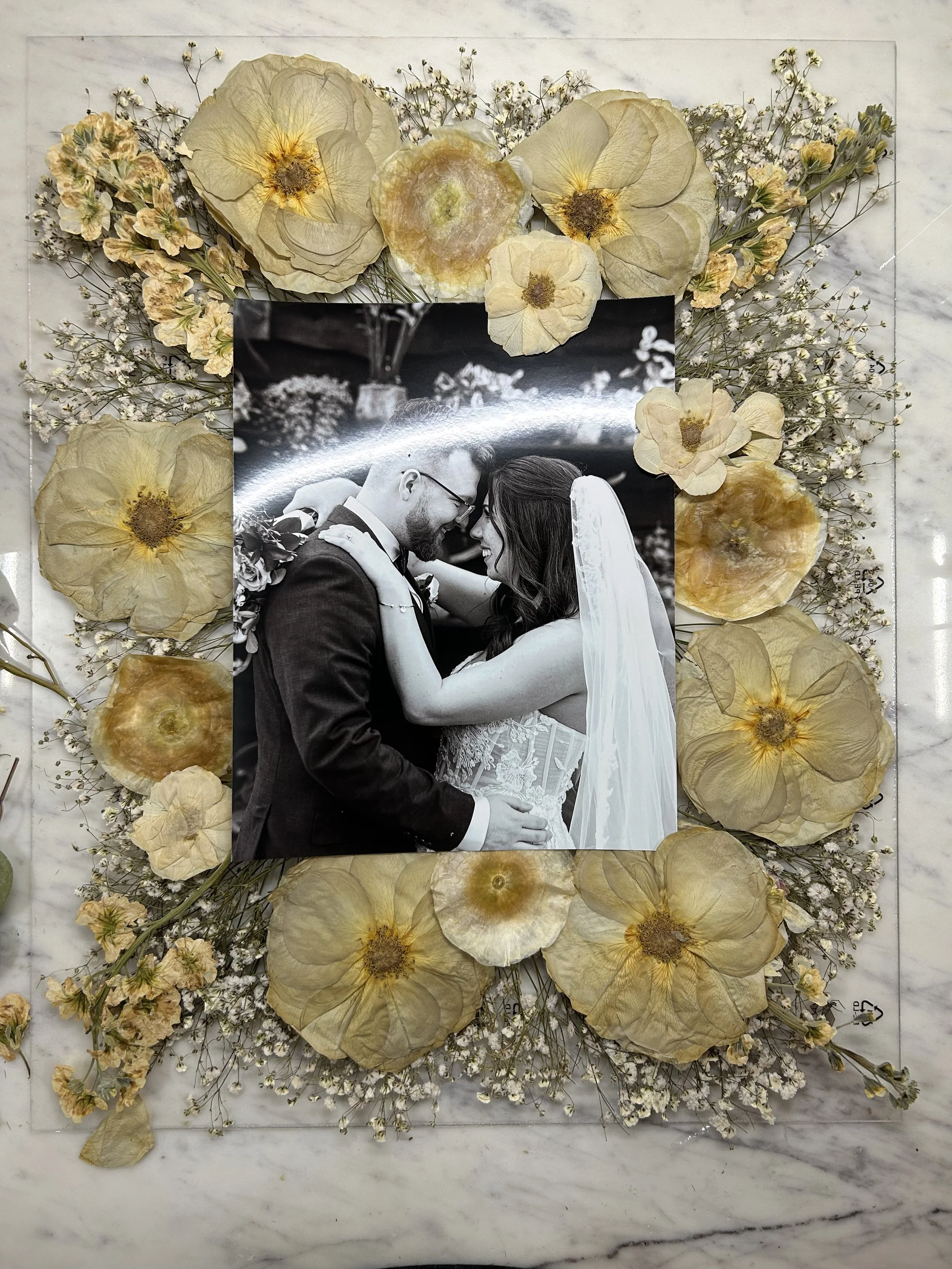
Color correction
Why Consider Color Correction When Preserving Your Wedding Bouquet?
When it comes to preserving your wedding bouquet, every flower tells a piece of your love story. While pressed floral preservation already offers a stunning way to keep those memories forever, color correction can take your piece one step further—enhancing the beauty and longevity of your flowers for years to come.
Beyond aesthetics, color correction helps preserve the brightness of your bouquet over time, giving your artwork a cleaner, more polished appearance as it’s displayed in your home. Over the decades, all flowers will fade naturally unless color enhanced. Some couples choose to keep their bouquet natural as they appreciate the story that natural flowers tell, while others prefer to keep their florals a lasting memory depicting them exactly as they looked on their wedding day.
Whether you choose color correction for long-lasting vibrance or prefer the soft, natural fade of your blooms over time, your preserved bouquet will always be a meaningful, one-of-a-kind reflection of your wedding day.
Color Correction is an optional upgrade available for pressed floral designs and Florals designed in shadow box preservations.
When dried, flowers naturally change color. Some may get a bit darker while others lose some of their natural color, and others can show more of their original undertones, leaving an unexpected final color. Adding the Color correction service is all about enhancing and maintaining the brightness and richness of your bouquet’s original colors — especially whites. White
flowers, in particular, are the quickest to fade as they dry and age, often shifting to soft beige or amber over time.
With color correction, I carefully and skillfully restore those subtle tones, making your blooms appear vibrant and true to your wedding day vision.
Specifics:
Whites: roses, ranunculus, hydrangea, stock, mums, lisianthus, tulips will all change to yellow or beige during pressing or show off their undertones of buttery yellows or soft greens. Peonies tend to stay relatively white, but all flowers will begin naturally yellowing over the years.
Pinks: Blush tone roses will turn a purple/gray color and many other soft pinks will fade to yellow or otherwise neutralize.
Cool tones: Blues and bright purples such as delphinium, hydrangea, lavender, lilac, and thistle will stay relatively well when initially pressed, though over the years will fade to neutrals. Greens like hellebore may turn brown.
Deep tones: Dark reds and bright reds will darken in flowers like rose, peony, amaranth, and ranunculus, but may not hold for tulips or other thin flowers.
Inquire if you have questions about specific flowers not mentioned. Pricing is as follows: 8x10- $25, 11x14 - $50, 12x18 - $65 16x20-$75, 18x24 - $100, 22x28 -$150, 24x36 - $200


